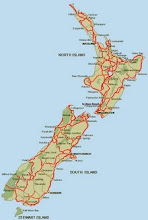
Slight mistake. Started the car early in the morning thinking "I'll quikcly clean the wind screen".
A few minutes later the temperature gauge informed us of an inhumane environment around the car.
Still, we had to get out after only a few miles to have a look at the 'Ojos de Mar'; the 'eyes of the sea'. From the moment we left the village we saw a creature moving fast through the landscape, using a short cut. He arrive about 3-4 minutes after us. Introduced himself as the manager.
That meant that he had to registrar us (!?!?), but not before taking our pictures from carefully chose locations so that our fingers pointed exactly to the Cerro Aracar, a 6086 m. high mountain nearby. The registration encompassed photographing our licence plate and car. He probably came from a long family line of plane spotters. Not too many planes is this area, so what do you do....... Getting back to the other side of the mountain meant going over it again. Nienke wasn't too happy about that considering the amount of trucks we'd seen the day before.
Our next road stop was this lovely donkey. Unfortunately Nienke was still very static (shoes, car, desert, we just don't know why, but we both walked around like triggerhappy batteries) meaning that every time the donkey sniffled Nienke outstretched hand he got a minor electric shock. So we drove on to the top where we met a nice couple from London who just came from the other side. They complained a bit about the road but because they were quite under dressed (ice cold wind on the top) we did not take them very seriously.
We couldn't even see anymore what music was playing, the display of the radio kept being blurred by dust. After having splashed around for an hour or so (much to the amusement of a few passer byes) we continued our journey. Quickly discovered that they had grey dust here, instead of the orange stuff we were used to.
After a hardly existing path finally ended between a huge cliff with a mud stone hut and 2 car wrecks, a teeth less woman more or less indicated that her son (the famous guide) was not there but we should just head for two white rocks in the distance and we would find it. Glad I used to be a boy scout after all. We did find it and a nice stream as well. You can see the rocks where they used to grind their food in.
From Cachi we drove to Cafayate, a very nice town surrounded by wineries and stunning rock formations. Just south of Cayafate were the amazing ruins of Quilmes. A town of 5000 people who resisted the Inca's and even managed to resist the Spanish for 130 year. Truly beautiful. On our way to Quilmes we were stopped by the Regional police. I showed my Dutch drivers licence, which clearly puzzled him enough. Uh..., buen viaje. 10 minutes later another road block. the Gendarmeria, the national police. Great communciation! Again no idea what to do with our papers, so they asked if I had drunken some wine. Not at 10 am sir! Ah, yes, the All Blacks are great. Oon our way back to Cayafate we expected the same 2 road blocks again, but they weren't there, proving our impression that if you want to smuggle things in Argentina, do it during siesta!
The only road block we encountered this time was from a nosy lama.
We had too much food and wine (for instance during the concert of Roberto Carlos) and too many car rides. I was still half dreaming when I heard Nienke mentioning the obvious. She had convinced the owner of the cabana we were staying in to loan us some bikes. A 'Bodega' (winery) in the foothills was her goal. Called 'Los Nubes'. I think I already gave it away. Foothills? Los Nubes (the clouds)? Anyway, we now remember again what 'False flat' means. Had to buy two small towels for our concrete saddles and reached the winery finally in a rather less impressive way. Nevertheless we enjoyed a beautiful example of the irrigation canals the aboriginals had build. They are still being used. Briefly visited some unimpressive ruins with our guide 'slomo'. Even standing still I almost ran over him. We left the bikes with 'slomo' (seemed like a safe bet) and stumbled the last 50 meters up to the winery.
Great reward. Quickly restored the lost calories with some empenadas, tamales and a bottle of cold Torrentes while enjoying the view over the valley. 2000 m. high.
Needless to say we looked great and confident on our way back to town. Here is Nienke arriving at the wine museum. A very interesting display of the journey from starting the first stalks to making the wine. Really enjoyed it.
Next day we visited Quebrada de la Conchas. Fantastic rock formations. Still can't get enough of it. Great names like 'Diabalo', the Amphitheather, the Castles.
We did some walks between the mountains and over valleys.
Even managed a selfie in which we are actually both visible.
Beautiful display of colours.
Ended up at a weird hotel. We assumed it was closed and there was nobody there, but a lovely lady ushered us to the garden for the great view, accompanied by another generous glass of torrontes.




















































































_+Lucky+shot+bij+Whangaroa.jpg)